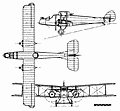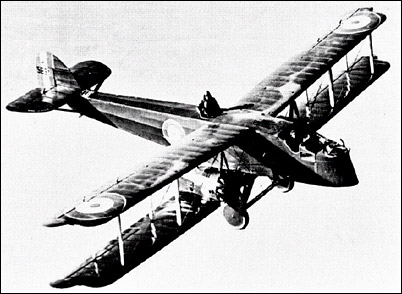|
| The omly prototype, first flown in January 1920.
 | A three-view drawing (640 x 592) |
| CREW | 3 |
| ENGINE | 2 x 2 x 320hp ABC Dragonfly I 9-cylinder air-cooled radial engines |
| WEIGHTS |
| Take-off weight | 3190 kg | 7033 lb |
| Empty weight | 1864 kg | 4109 lb |
| DIMENSIONS |
| Wingspan | 18.34 m | 60 ft 2 in |
| Length | 13.79 m | 45 ft 3 in |
| Height | 4.11 m | 14 ft 6 in |
| Wing area | 66.80 m2 | 719.03 sq ft |
| PERFORMANCE |
| Max. speed | 198 km/h | 123 mph |
| Ceiling | 4420 m | 14500 ft |
| ARMAMENT | 2 x 7.7mm macine-guns, 4 x 100kg bombs |
| Klaatu83, e-mail, 21.07.2017 21:24 Intended as an improved successor to the D.H.10 "Amiens", the D.H.11 was better in every respect except for its' engines. The unreliable ABC Dragonfly engines were a failure. In any case the D.H.11 was not flown until WW-I was over, by which time there was no longer any need for, it anyway. reply |
|
Do you have any comments?
|
| 
COMPANY
PROFILE
All the World's Rotorcraft
|











